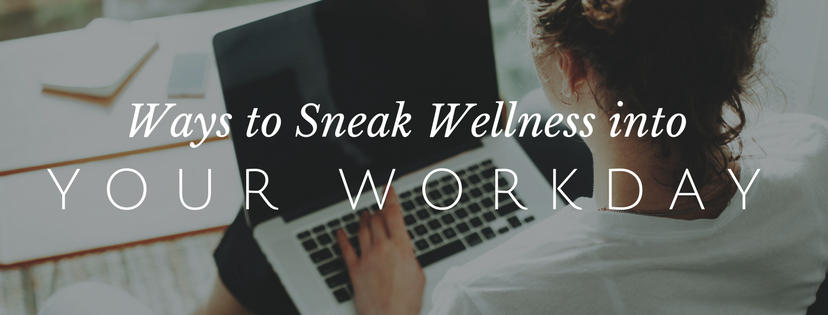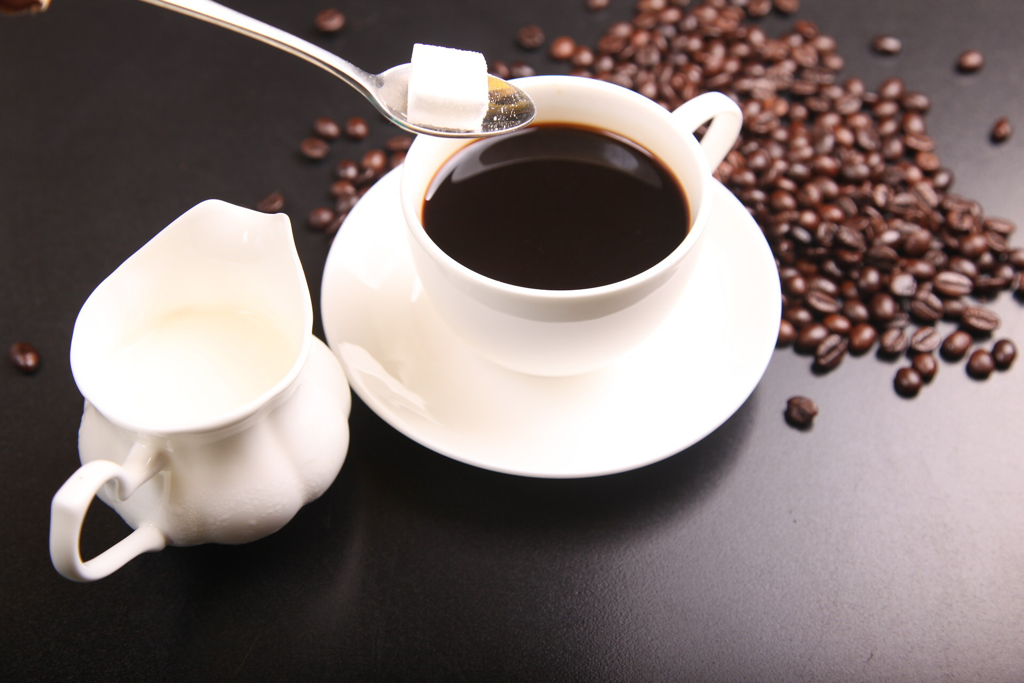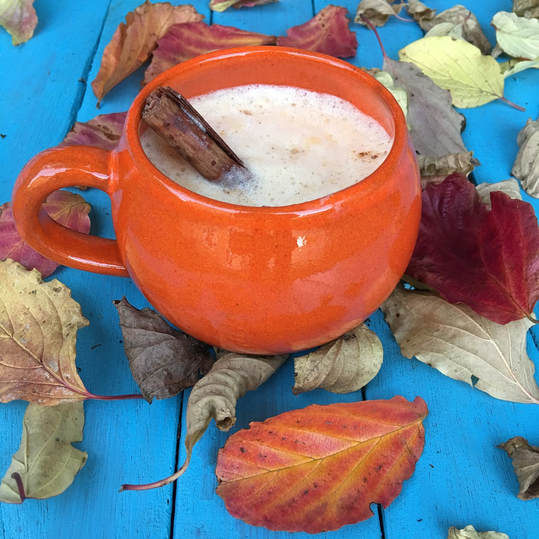|
Daily workouts can be quite difficult to fit into the busy schedule, and often, this causes us to throw our hands up and give up altogether. We often have an all-or-nothing mindset when it comes to exercise, but this way of thinking is harming our health — so, let’s put it to rest today and talk about how we can do that.
A workout doesn’t have to mean an hour and a half of sweating at the gym. We can find ways to sprinkle wellness into our everyday lives, and we can even fit wellness into our workday. Here are a few ways to focus on wellness during your workday… Think about your transport methods Your workday essentially begins as soon as you leave your home in the mornings. If possible walk or cycle to work instead of using public transportation or driving. Not only is this great exercise, but it will also allow you to start your day off in a much calmer way, rather than if stuck in traffic. If your workplace is too far to choose this plan, decide to park as far away from the building as possible. Doing so will give you the opportunity to walk a more thereby getting some extra steps in. Also, ditch the elevator and take the stairs. You’ll be amazed at the difference it makes over time! Make your office space greener An excellent way to lighten your mood at work is to make your workspace more comfortable and inviting. Find some plants that don’t need a lot of sunlight and add as many as you’d like to your office area. Live plants will also assist in cleansing the air in your office, which is an added benefit to the beautiful scenery. Aside from the greenery, keeping your office space clutter-free will help you feel more productive and less stressed. Creating a routine that you can maintain to keep your space organized will help keep your office space running smoothly. Don’t forget the photos of your loved ones to lift your spirits, along with positive affirmations to visit daily! Work on your posture Good posture is a conscious effort we must make, especially when we slouch in office chairs for most of the day. I know, I know — it’s more comfortable usually — but the long-term effects are not. If you need a better chair, it is well worth the investment. Look up ergonomic chairs and visit your local office supply store to try some out in person. Good posture will assist you in concentrating better, and lessen those backaches you take home with you daily. Make use of your lunch break It’s time to stop working through your lunch break while you munch on a snack from the vending machine. One of the best ways to add wellness into your workday is to bring a healthy lunch. It doesn’t take much effort to make meals for the week on a Sunday afternoon — so head on over to Pinterest and look up some new, delicious looking healthy lunches you can start taking with you. If there’s time, squeeze in a 10-minute walk after you eat for better digestion and a clearer mind. Always have healthy snacks nearby I get it — sometimes when you’re racing against the clock to meet a deadline, you crave a sugar boost to keep you going. Keeping healthy snacks in your office will help curb your snack cravings while not having to resort to the vending machine. Dried fruit, nuts, dark chocolate or healthy granola bars are great options that will keep in your desk without going bad. It's also a good idea to stash some healthy snacks in your car for those days that you do drive and get stuck in traffic. Don’t forget to drink your water Ah, water. It’s often so undervalued, but it is truly essential. Staying hydrated will help your focus and give you natural energy. Dehydration is one of the leading causes of tiredness, headaches, and cravings. So, be sure to keep the water flowing throughout the day. You won’t regret it. These are simple ways to begin implementing wellness into your workday every day. You’ll find that the positive changes will reveal themselves quickly, and you’ll crave the good feelings, wanting more. It’s not about perfection -- true wellness is about finding ways to fit it into your schedule, and about making the best choice available with what you’re given. What are a few ways you plan to add some wellness into your workday? Hit reply and let me know what’s on your mind.
1 Comment
Being tired is something we all deal with – a simple part of life that we cannot escape. But how do you know when your tiredness is normal or something you should pay more attention to? Adrenal fatigue affects a significant number of people in various ways, and you could be dealing with it right now without even knowing. Unsure of what the adrenal glands do, or where they even are? Don’t worry – you aren’t alone. The adrenal glands are located above the kidneys and they are responsible for producing important hormones. When the adrenal glands are unable to work as efficiently as they should, problems arise. This is common with people who are struggling with stress of all kinds – mental, emotional, physical. When the adrenal glands aren’t functioning properly, the glands aren’t producing important hormones such as cortisol and adrenaline. When this happens, the body feels the effects in various ways. Here are a few ways to notice if you may be struggling with adrenal fatigue…
Other symptoms you should watch out for include:
If any of this sounds like something you’re dealing with, please be sure to see your medical professional and let them know about what you’ve been going through. The health of our adrenal glands are crucial in our overall wellbeing, so treating them well is of utmost importance. Coffee is one of those things - you either love it or hate it. You know if you like the taste or not (or if it’s just a reason to drink sugar and cream). You know how it makes you feel (i.e. your gut, your mind, etc.). Not to mention the crazy headlines that say coffee is great, and the next day you should avoid it! There is actual science behind why different people react differently to it. It's a matter of your genetics and how much coffee you're used to drinking. NOTE: Coffee does not equal caffeine. Coffee contains between 50-400 mg of caffeine/cup, averaging around 100 mg/cup. Coffee is one of the most popular ways to consume this stimulant. But… a cup of coffee contains a lot of things over and above the caffeine. Not just water, but antioxidants, and hundreds of other compounds. These are the reasons drinking a cup of coffee is not the same as taking a caffeine pill. And decaffeinated coffee has a lot less caffeine; but, it still contains some. Let's look at caffeine metabolism, its effects on the mind and body, and whether coffee drinkers have higher or lower risks of disease. Then I’ll give you some things to consider when deciding if coffee is for you or not. Caffeine metabolism Not all people metabolize caffeine at the same speed. How fast you metabolize caffeine will impact how you’re affected by the caffeine. In fact, caffeine metabolism can be up to 40x faster in some people than others. About half of us are “slow” metabolizers of caffeine. We can get jitters, heart palpitations, and feel "wired" for up to 9 hours after having a coffee. The other half is "fast" metabolizers of caffeine. They get energy and increased alertness and are back to normal a few hours later. This is part of the reason those headlines contradict each other so much - because we’re all different! The effects of coffee (and caffeine) on the mind and body NOTE: Most studies look at caffeinated coffee, not decaf. The effects of coffee (and caffeine) on the mind and body also differ between people; this is partly from the metabolism I mentioned. But it also has to do with your body’s amazing ability to adapt (read: become more tolerant) to long-term caffeine use. Many people who start drinking coffee feel the effects a lot more than people who have coffee every day. Here’s a list of these effects (that usually decrease with long-term use): ● Stimulates the brain ● Boosts metabolism ● Boosts energy and exercise performance ● Increases your stress hormone cortisol ● Dehydrates So, while some of these effects are good and some aren’t, you need to see how they affect you and decide if it’s worth it or not. Coffee and health risks There are a ton of studies on the health effects of coffee, and whether coffee drinkers are more or less likely to get certain conditions. Here’s a quick summary of what coffee can lead to: ● Caffeine addiction and withdrawal symptoms (e.g. a headache, fatigue, irritability) ● Increased sleep disruption ● Lower risk of Alzheimer's and Parkinson's ● Lower risk of developing type 2 diabetes ● Lower risk of certain liver diseases ● Lower risk of death (“all cause mortality") ● Mixed reviews on whether it lowers risks of cancer and heart disease Many of the health benefits exist even for decaf coffee (except the caffeine addiction and sleep issues). NOTE: What’s super-important to note here is that coffee intake is just one of many, many factors that can affect your risks for these diseases. Please never think regular coffee intake is the one thing that can help you overcome these risks. You are health-conscious and know that eating a nutrient-rich whole foods diet, reducing stress, and getting enough sleep and exercise are all critical things to consider for your disease risk. It’s not just about the coffee. Should you drink coffee or not? There are a few things to consider when deciding whether you should drink coffee. No one food or drink will make or break your long-term health. Caffeinated coffee is not recommended for: ● People with arrhythmias (e.g. irregular heartbeat) ● People who often feel anxious ● People who have trouble sleeping ● People who are pregnant ● Children and ● teens. If none of these apply, then monitor how your body reacts when you have coffee. Does it: ● Give you the jitters? ● Increase anxious feelings? ● Affect your sleep? ● Give you heart palpitations? ● Affect your digestion (e.g. heartburn, etc.)? ● Give you a reason to drink a lot of sugar and cream? Depending on how your body reacts, decide whether these reactions are worth it to you. If you’re not sure, I recommend eliminating it for a while and see the difference. Recipe (Latte): Pumpkin Spice Latte 3 tbsp coconut milk
1 ½ tsp pumpkin pie spice (or cinnamon) ¼ tsp vanilla extract 1 tbsp pumpkin puree ½ tsp maple syrup (optional) 1 cup coffee (decaf if preferred) Instructions: Add all ingredients to blender and blend until creamy. Serve & enjoy! |
Archives
November 2022
Categories
All
|




 RSS Feed
RSS Feed